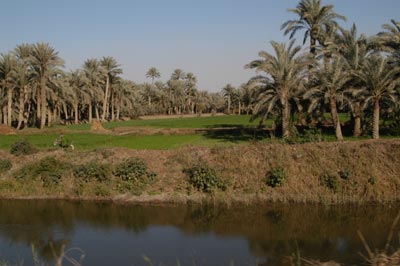










more photos
site Information
0800 - sunset daily
£E 10 entry fee
£E student
relevant links
history
Abu Sir
Abu Sir is just a bit south of Cairo, and is part of the swath of pyramid fields that rn alongside the Nile. Most people are familiar with the pyramids at Giza -- The Great Pyramid of Cheops, Chephren's just-slightly-smaller pyramid, the pyramid of Menkaure. What they don't know, usually, is that there are some 300 pyramids in Egypt. Most of them are small and ruined, some little more than heaps of rocky sand.
The name Abu Sir comes from the Greek name for this city, Busiris, which in turn comes from Per Wsir, or "Place of Osiris". At least one theory purports that there are so many cities called Abu Sir because of the myth of Osiris -- that he was killed and his body cut into many pieces and scattered over the land. Just to the north of Abu Sir is Abu Ghurab, the site of the Sun Temples of Userkaf and Niuserre.
The road to Abu Sir is through the southern part of Cairo, and much of our trip followed one of the irrigation canals. The valley is surprisingly green, and lined with small farms.

fields across the canal
LIke many of the houses outside of the city proper, they are a bit spartan. As we drove out of Cairo, the multi-story brick houses gave way to small concrete block houses, then to a veritable shanty-town. We asked if these were houses, and Fateh told us that these were work camps -- temporary shelters used during the planting season.

one of the many workers houses near the irrigation canal
The site is about seventeen miles south of Cairo, but it takes a good hour to get there. Currently (Feb 2003) the site is closed to visitors. It was opened in 1999 with a new visitors center and brand new asphalt road.